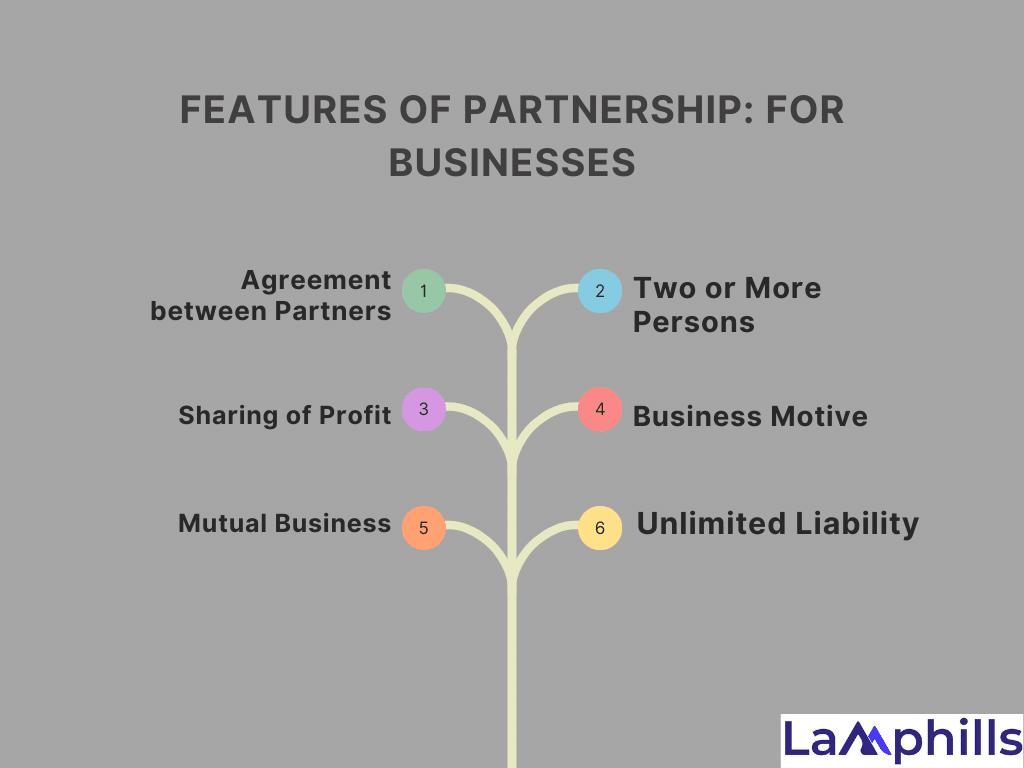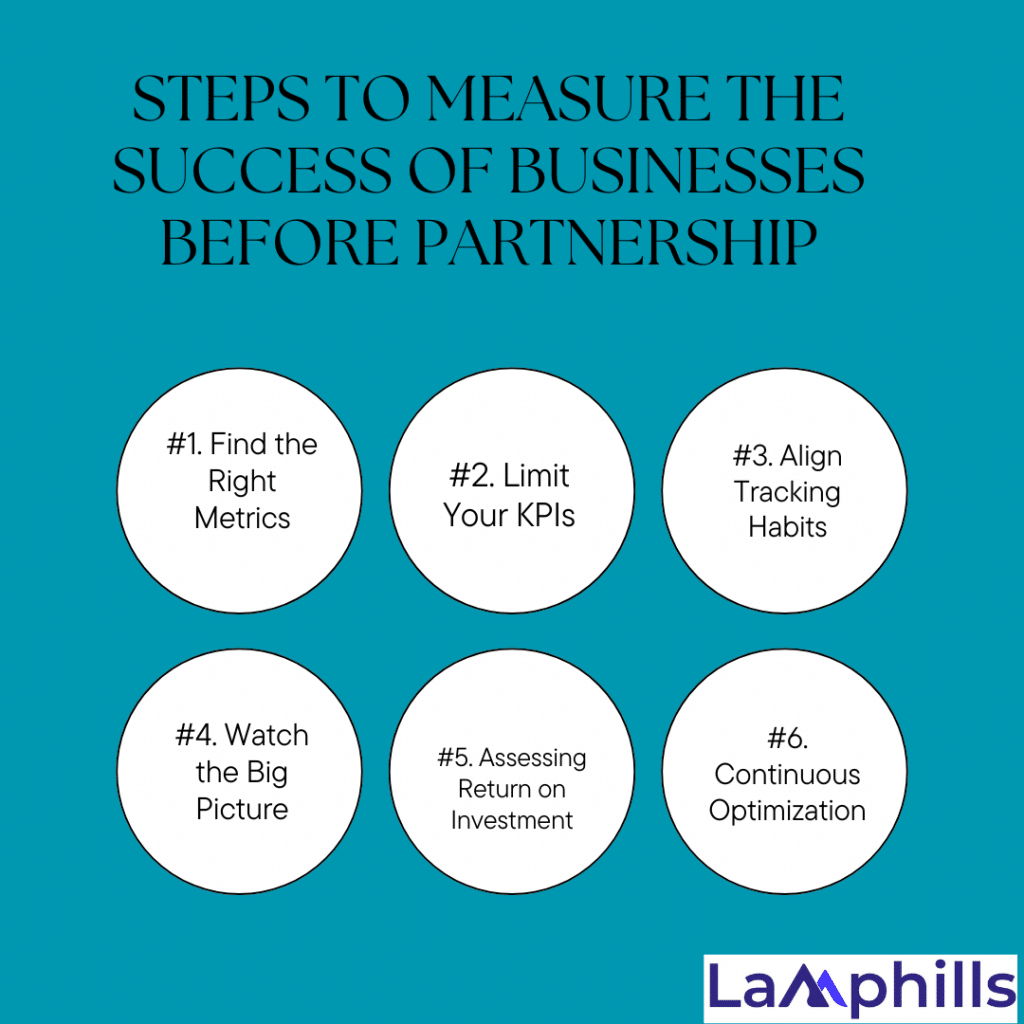Everyone has a favorite brand, but there’s a high possibility your favorite products are the result of two different examples of brands in partnership. For instance, Betty Crocker collaborated with Hershey’s to include chocolate syrup in their iconic brownie recipe, and it became one of my favorite childhood memories.
That co-branded product is great since it combines two legendary brands into one delectable experience for aficionados of both baking and chocolate. These brands continue to develop new co-branded products to this day.
Having witnessed and been part of several partnerships throughout my career, I’ve seen firsthand the magic that happens when businesses come together. In this article, I’ve put together some partnership examples to inspire your partner programs.
Key Takeaways
- Successful partnerships often hinge on the complementary strengths of the involved parties. For example, Apple and IBM combined Apple’s intuitive hardware with IBM’s enterprise solutions to offer unique value, demonstrating how aligning distinct but complementary capabilities can lead to innovative solutions and significant business impact.
- Effective partnerships require a shared vision and clear objectives. Nike and Apple’s collaboration on the Nike+ platform, for instance, was successful because both brands aimed to enhance the athletic experience and integrate technology, showing the importance of aligning goals and strategies for mutual benefit.
- Co-branding campaigns, like those between GoPro and Red Bull or Levi’s and Pinterest, illustrate how brand compatibility can enhance reach and engagement. By partnering with brands that share similar values and target demographics, companies can amplify their message and tap into new audiences.
- To gauge the effectiveness of a partnership, it’s essential to track relevant metrics. Metrics such as ROI, revenue growth, and customer retention, as highlighted in the article, help assess the impact of the collaboration and guide future strategies. Consistent tracking and evaluation are key to optimizing partnership success.
- Successful partnerships require ongoing evaluation and adaptation. Regular reviews, as advised in the content, help ensure that the partnership remains aligned with evolving goals and market conditions.
What is a Partnership?
A partnership is a formal agreement between two or more parties to manage and operate a business and share the profits. In a general partnership, all partners share their liabilities and earnings equally. In various types of partnerships, profits may be distributed in varying percentages, or some partners may have restricted liability. Partnerships may also include a “silent partner,” who is not involved in the day-to-day operations of the business.
The sort of partnership that company partners pick will be determined by how they want to handle day-to-day operations, who is willing to be financially responsible for the business, and how they want to pay taxes. Here is an example of what a partnership agreement looks like,
Before we dive into the case studies, let’s set the stage. What makes a partnership truly successful? From my experience, it’s all about finding that sweet spot where both parties have complementary strengths, a shared vision, and a commitment to open communication.
Features of Partnership: For Businesses

Following are a few features of a partnership:
#1. Agreement between Partners
A partnership is an association of two or more individuals, and a partnership arises from an agreement or a contract. The agreement (accord) becomes the basis of the association between the partners. Such an agreement is in written form. An oral agreement is evenhandedly legitimate. To avoid controversies, it is always good, if the partners have a copy of the written agreement.
#2. Two or More Persons
To manifest a partnership, there should be at least two (2) persons possessing a common goal. To put it in other words, the minimal number of partners in an enterprise can be two (2). However, there is a constraint on the maximum number of people.
#3. Sharing of Profit
Another significant component of the partnership is the agreement between partners to share the gains and losses of a trading concern. However, the definition held in the Partnership Act elucidates that a partnership is an association between people who have consented to share the gains of a business, the sharing of losses is implicit. Hence, the sharing of gains and losses is vital.
#4. Business Motive
It is important for a firm to carry out some kind of business and should have a profit-gaining motive.
#5. Mutual Business
The partners are the owners as well as the agents of their firm. Any act performed by one partner can affect other partners and the firm. It can be concluded that this point acts as a test of partnership for all the partners.
#6. Unlimited Liability
Every partner in a partnership has unlimited liability.
Steps to Measure the Success of Businesses Before Partnership

But if you’re new to co-branding, how can you determine success? There are numerous ways to measure partnership success. To begin, consider your co-branding collaborations in three stages. First, have you identified the appropriate cobranding partner? Brand compatibility is essential. Then you need to figure out how your brands will collaborate.
Consistent messaging, effective communication amongst partners, and resource distribution will all have an impact on the overall quality of your work. This co-marketing guide will help you get started with your first co-branding collaboration. Next, you’ll want to evaluate the results of your collaborative efforts. Track a co-branding campaign:
#1. Find the Right Metrics
Choose KPIs that both brands track and have easy access to. Be sure that these metrics align with business goals. You’ll want KPIs that you can track to measure specific campaigns, as well as KPIs you can track for the life of your partnership. These might include:
- ROI
- Revenue growth
- Customer retention
- Website Traffic
- Social media engagement
- Share of voice
#2. Limit Your KPIs
Combining the operations of two separate teams might be complicated. To make evaluating success achievable for both teams, be deliberate in your KPI selection and avoid adding new KPIs for each campaign and project. Try to focus on measures that are directly related to relationship performance.
#3. Align Tracking Habits
Create a data tracking system that will allow you to immediately compare outcomes with your partner. For example, if they measure views monthly and you track them weekly, there can be data inconsistencies, which can make things more complicated than necessary.
KPI alignment can help you gain a clear view of your outcomes before the relationship and track the impact of your partnership over time. This can also help you focus on where you can improve co-branding initiatives.
#4. Watch the Big Picture
Track ROI or another KPI, such as revenue growth, to assess the entire impact of your new alliance. As you and your partner’s demands and goals change, this data provides insight into the long-term value of your efforts.
Finally, to assess the performance of your co-branding collaboration, set aside time to do an annual evaluation. Check for consistent brand alignment and balanced priorities. Consider asking yourself:
- Are you running the same campaigns over and over?
- Have results plateaued?
- Are you still coming up with exciting ideas together?
If the answer is no to any of the above, you might want to rethink the partnership.
It’s also crucial to confirm that your co-branding partnership is still meeting stakeholder expectations. If either team’s demands are not being satisfied, you may need to reconsider your relationship.
This evaluation is also an exciting opportunity to see how developments in your industry may benefit your cobranding efforts. Set aside time to discuss new tactics and goods with your partner, which could lead to even more exciting collaboration.
#5. Assessing Return on Investment
Calculate the ROI to quantify your partnership’s financial impact. Compare the costs and returns, taking into account both monetary and non-monetary benefits.
Example: If your partnership involves a joint promotional offer, track the increase in sales directly attributable to the campaign. Calculate the revenue generated from the partnership and compare it to the overall investment made.
#6. Continuous Optimization
Regularly review the gathered data and optimize your partnership marketing strategy accordingly. Identify areas for improvement and refine your approach to ensure ongoing success.
For instance, If data analysis reveals that a particular channel or aspect of the partnership is underperforming, adjust your strategy. This change could involve shifting focus to more successful channels, modifying messaging, or exploring new collaborative avenues.
Examples of Successful Businesses In Partnerships
When done right, partnership marketing is one of the most powerful marketing methods. It promotes speedy growth, fosters trust, considerably improves revenue, and provides a slew of perks and advantages. It sets your company for long-term success by establishing a network of dynamic, long-lasting connections.
The most successful advertising alliances are created between organizations whose target customers have many characteristics, including demographics and the values and interests that both groups prioritize. Here are some partnership marketing examples between well-known businesses:
#1. GoPro & Red Bull
GoPro doesn’t only offer portable cameras, and Red Bull doesn’t just sell energy beverages. Instead, both have built themselves as lifestyle brands, specifically ones that are action-packed, adventurous, fearless, and typically somewhat extreme. These common ideals make them an ideal match for co-branding efforts, particularly those involving extreme sports.
To make the relationship work, GoPro provides athletes and adventurers from all over the world with the equipment and funds they need to capture races, stunts, and action sports events on video—all from the athlete’s perspective. At the same time, Red Bull uses its knowledge and reputation to organize and fund these events.
“GoPro camera technology is allowing us to complement the programming by delivering new athlete perspectives that have never been seen before,” said Sean Eggert, Red Bull’s former VP of sports marketing. The collaboration continues to use exclusive GoPro content to enhance both companies’ growth.
#2. Rachel Comey, Victor Glemaud, Sandy Liang, Nili Lotan, & Target
Anyone who is designer-conscious understands that high fashion and Target do not have the same quality standards. Designer dresses, such as Sandy Liang’s, cost over $600, but Target dresses cost roughly $35 per pair. Do you see what I mean?
However, the price difference is precisely why these designers and Target brands chose to collaborate. To complement its current brand positioning, Target has collaborated with high-end fashion designers Rachel Comey, Victor Glemaud, Sandy Liang, and Nili Lotan to offer special branded items for a limited time.
In this exchange, the high-end designers can expose their name to a new generation of potential consumers, who will increasingly aspire to own more pieces from those high-end collections while furthering the idea that Target can be a store to find fashion-forward clothing.
#3. Joybird & Sherwin-Williams
The Joybird home lifestyle brand and paint company Sherwin-Williams did a co-branding campaign when they partnered together to curate an eclectic collection of home furnishings and color palettes.
Together, the two brands created an exclusive product line of paints and room design inspiration that helped customers easily select paint colors to complement their furniture choices.
These two businesses saw the opportunity to run a campaign that exposed their product and copywriting to brand-new audiences. This intersection of target demographics could have brought in new business for each other and could have paved the way for future co-branding collaborations if proven mutually beneficial.
#4. Balenciaga & Crocs
Balenciaga and Crocs have been making headlines with their fun fusion of aesthetics since 2018. But the most recent pairing got a boost from Eliot Page on the red carpet in 2022.
These brands align in their dedication to innovation and individuality. As Balenciaga Creative Director Demna states in GQ, I am not interested in anything average, including the average consumer… if someone is personally offended by Crocs, there might be a more serious problem within that person than the design of a shoe.”
This high fashion brand uses Crocs’ accessible shoe brand to expand and reinforce its experimental ideas. Then, it places those experiments in public spaces to create excitement and engagement with the audiences for both brands.
#4. BMW & Louis Vuitton
Car manufacturer BMW and designer Louis Vuitton may not be the most obvious pairings. But if you think about it, they have a few important things in common. If you focus on Louis Vuitton’s signature luggage lines, they’re both in the business of travel. They both value luxury. And finally, they’re both well-known, traditional brands that are known for high-quality craftsmanship.
These common principles are precisely why this co-branding initiative makes so much sense. In their collaboration, BMW developed the BMW i8, a sports automobile model, and Louis Vuitton created an unusual four-piece set of luggage and bags that fit precisely into the car’s rear parcel shelf.
Although the four-piece luggage set costs $20,000, the pricing is appropriate for the target market, given the BMW i8 starts at $135,700. At that price, that baggage set seems like a drop in the bucket.
The baggage not only fits properly in terms of size, but its form and appearance complement BMW’s image: sleek, masculine, and high-quality. It turns out, that both the luggage and some parts of the car’s interior use carbon fiber, strong-yet-light composite material.
#6. Starbucks & Spotify
Starbucks scaled up a premium coffee shop experience into a massive global brand, using music to create an ambiance around its coffee. Spotify, a music streaming platform, has powered almost 25 billion hours of listening worldwide. Starbucks and Spotify forged an innovative co-branding partnership to build a “music ecosystem,” offering artists greater access to Starbucks consumers and giving Starbucks access to Spotify’s expansive discography.
Through the initiative, Starbucks employees get a Spotify premium subscription, with which they can curate playlists (that patrons can access through the Starbucks Mobile App) to play throughout the day in the shop. This music ecosystem is designed to expand the coffeehouse environment that Starbucks is known for while giving artists greater exposure to Starbucks customers.
The “musical-ecosystem” partnership is mutually beneficial, allowing the companies to reach each other’s audience without sacrificing their brand.
#7. Apple & MasterCard
Sometimes, co-branding partnerships aren’t just cool projects between two companies; they have practical value when the companies work together.
When Apple debuted the Apple Pay app, it effectively transformed the way people do transactions. This app allows users to save credit or debit card information on their phones, allowing them to use the card without physically carrying it with them. However, for this app to flourish, credit card firms must integrate with the technology. Similarly, credit card businesses will face more competition if they are not compatible with the current consumer purchasing instrument.
MasterCard became the first credit card firm to allow consumers to save their credit and debit cards on Apple Pay to gain a competitive advantage. This connection continues to be beneficial for both Apple and Mastercard with the debut of the Apple Card.
MasterCard not only shows continuous support of a major consumer tech developer in this partnership — it evolves with its customers in how they choose to make purchases.
#8. Airbnb & Flipboard
You’ve heard of Airbnb, the room-sharing program that helps you find convenient housing hosted by actual people. But its partner, Flipboard, may not be on your radar.
Flipboard is a news aggregator that collects and organizes news and topical content that users share on social media, allowing you to “flip” through the material in the same way that you would feed. Airbnb collaborated with Flipboard to develop Experiences, which provide Airbnb users with lifestyle content targeted to their interests and shared by others who share those interests.
The ongoing campaign recently led to another co-created product called Trips, which allows Airbnb users to connect with hosts with common interests and book these experiences when traveling. This partnership is an impressive example of how businesses can connect their customers with information that caters to their interests and drives product usage as a result.
#9. Levi’s & Pinterest
Levi Strauss & Co., one of the world’s oldest and most recognized jean brands, recently joined forces with Pinterest, a social platform where users pin posts they like to their profiles.
People often turn to Pinterest for fashion inspiration, making a co-branding partnership with Levi’s a natural partnership. Styled by Levi’s is a new initiative between Pinterest and Levi’s that offers a “personalized styling experience,” or style insights tailored to each user’s tastes and preferences.
The partnership offers an authentic and individualized brand relationship, which is difficult to come by in an increasingly digital environment. Pinterest offers Levi’s a leading social platform with millions of users interested in visual offerings, and Levi’s meets these needs with digital personalization and visual-focused boards.
#10. Nike and Cristiano Ronaldo
Cristiano Ronaldo is on track to become the world’s richest Nike athlete after signing a $1 billion lifetime endorsement contract with the sportswear brand.
The two signed their contract in 2016, however, they had been working together since 2003 (about the same time that Ronaldo joined Manchester United). According to Forbes, by the time the lifetime contract was signed, Ronaldo had already worn almost 60 pairs of Nike football studs!
Although it is unknown exactly what the conditions of the agreement were, we do know that in the year leading up to it, Ronaldo had previously produced 347 posts on social media with a mention of Nike or with the Nike logo on show. This activity alone reportedly generated Nike $474 million in media value, just in 2016 (according to Hookit).
Given this, the collaboration appears to be a solid deal for both Nike and Ronaldo. If 2016 is any indication, Nike might virtually recoup its $1 billion investment in a few years!
While the collaboration is an excellent example of sponsorship marketing, it also demonstrates how closely related the various types of partner marketing can be. Nike’s logo appears in many of Ronaldo’s social media postings and may easily be interpreted as product placement, yet Ronaldo’s ‘endorsement’ of the company indicates a crossover with influencer marketing.
Why Partnerships Are Important For Businesses

One of the most important ways that people can add value is by coming together. And that power grows when it happens at the brand scale.
#1. Expand Your Brand’s Reach
Co-branding combines your company’s audience with that of another reputable brand. As a result, you increase reach with your partner’s consumers and followers, while they increase reach with your fans.
Furthermore, a co-branding partnership is greater than the sum of its parts. Your collaboration can help both parties broaden their brand reach to new places, demographics, and more. Furthermore, it helps strengthen your brand’s positioning.
#2. Cost and Resource Sharing
Marketing and branding operations may be costly, especially when scaled. Co-branding allows both teams to benefit from their partner’s resources, including additional people, funding, and knowledge for each campaign. Co-branding provides excellent learning chances for your staff.
#3. Improve Brand Trust and Customer Loyalty
If you have a new business, partnering with an existing company can help you build a stronger reputation. This builds client trust by demonstrating your commitment to consistency. It blends their allegiance to another brand with the value they perceive your brand can provide.
If you manage an established company, collaborating with a new startup brand demonstrates your commitment to innovation. This could result in innovative and intriguing goods, as well as a fresh perspective on culture or messaging.
#4. Increase Sales And Revenue
A bigger audience, increased brand trust, and loyalty from repeat customers all naturally equate to sales. Partnerships can also provide additional revenue through new products and services that your brand may struggle to access on its own.
#5. Solidifies Your Brand’s Identity
When a small, newer company joins up with a larger, established one, both companies increase their exposure. Allying with a startup might give larger brands exposure to a more targeted subset of consumers. Increased credibility and driving traffic from larger audiences are some of the benefits smaller brands can look forward to.
By forming such alliances, you increase your brand image and equity. Target audiences will positively link your business with others that have a positive brand reputation.
What are the 5 characteristics of a partnership?
The following are the five characteristics of a partnership:
- Sharing of profits and losses
- Mutual agency
- Unlimited liability
- Lawful business
- contractual relationship
What are the 3 disadvantages of a partnership?
The following are the disadvantages of a partnership:
- Unlimited liability
- Risk of disagreement between partners
- Instability of the partnership
What is the most important element of a partnership?
The most important element in a partnership is mutual agency, which states that every partner must be an agent and principal of himself and other partners. It says that business must be carried on by any or all of the partners.
What is an example of a partnership deal?
Starbucks’ in-store coffee shops are at Barnes & Nobles’ bookstores.
Conclusion
Reflecting on these successful partnerships, one thing is clear: the magic happens when businesses come together with a shared vision and complementary strengths. Whether you’re eyeing a tech giant, a retail leader, or a nonprofit organization, the principles of a successful partnership remain the same.
This is because partnerships offer incredible opportunities for growth and innovation. So, if you’re considering a collaboration, remember to look for partners who bring out the best in your business and work towards common goals. Embrace the lessons learned from these top collaborations, and you might just find yourself crafting a partnership that leads to remarkable success.
Although you might not have the budget of the brands noted above, you can take note of their creativity, level of storytelling, and how they pooled their resources to connect their separate brands in a mutually beneficial way. As you search for the best co-marketing partner for your brand and build a winning campaign, I hope you find some inspiration for your next stellar launch.
References
Related Articles
- Key Tips To A Successful Partnership Announcement (Right Way to Make a Partnership Announcement)
- How to Write The Perfect Media Brief: A Step-by-Step Guide
- How to Write a Partnership Press Release: Expert Tips and Examples to Build Trust and Showcase Authority
- Inspiring Brand Examples: Successful Strategies from Top Companies






